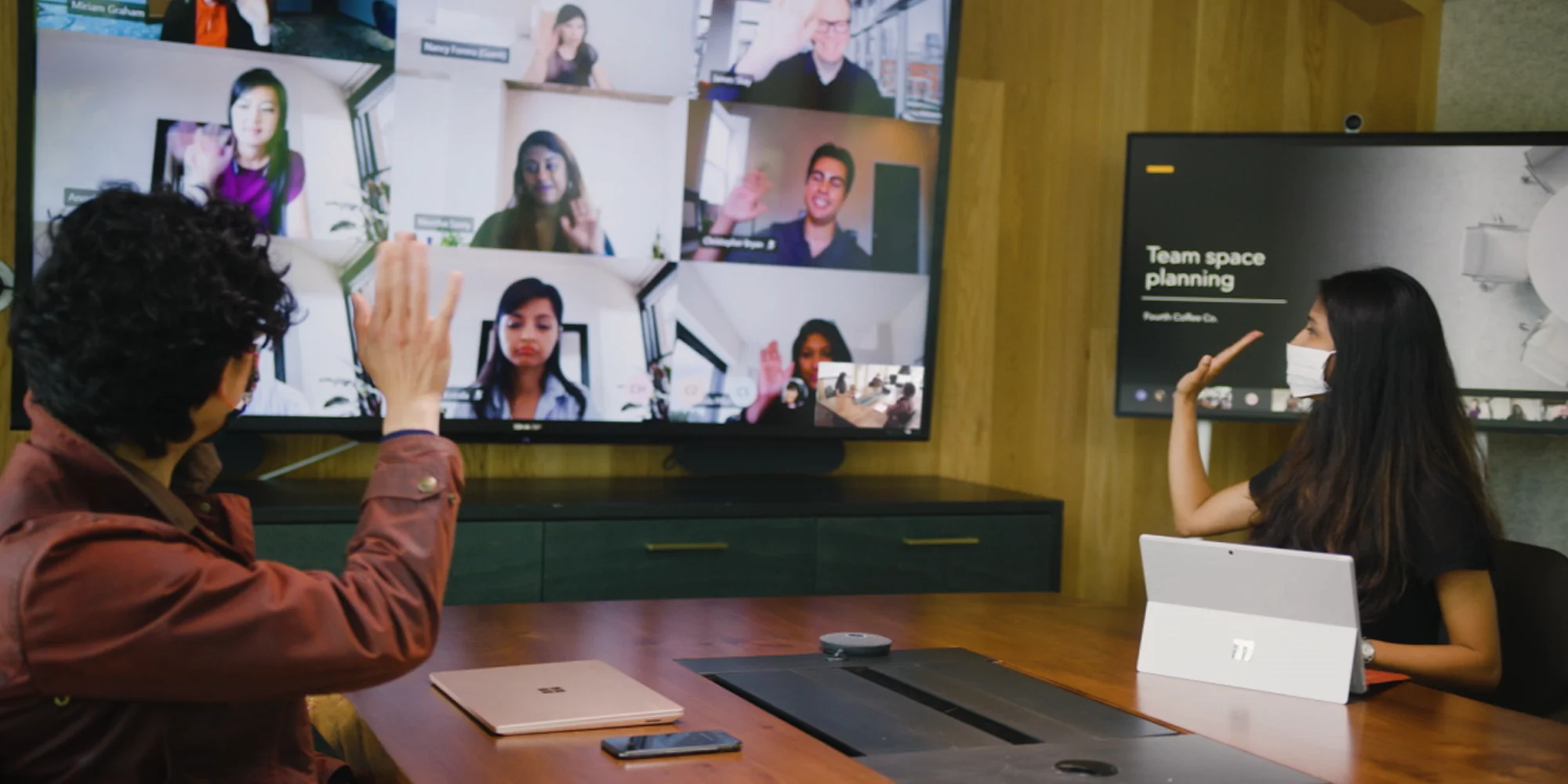
In this article
Why Video Conferencing Technology Is Must for Hybrid Work Setup?
In this article
Introduction
This is the pandemic-stricken era we are dwelling in, and we are trying our best to cope with every challenge thrown at us as much as possible. After health, a factor that has become a real struggle for us is continuing our professional practices at offices. Even though office buildings are reopening back again at a gradual pace, it is evident that there is no rush back as such to physical offices.
In fact, it has become an entirely unpredictable notion. Hence, there exists the concept of hybrid work culture and meetings more strongly than ever before today. A large percentage of businesses from various industries around the globe are reliant on hybrid work strategies. This is significantly backed by video conference technology.
Besides, modern businesses are also utilizing visual tools as a crucial part of their inclusive growth strategy. Advanced video technologies and video marketing strategies are helping many companies survive even in this unmanageable phase brought by time.
The Rising Hybrid Work Trend and What Does It Involve?
So, you must have come across virtual or remote working. But hybrid work culture is much more than that. In the case of hybrid meetings, certain participants join in-person and live from office meeting rooms while the others join remote locations.
These remote locations might include homes, hotels, airports, to just cafes. It is basically a combination of online presentations and lives video streaming of content.
From data sharing, interactivity, recording to in-person interaction, it covers plenty. The need for such a work culture is increasing day by day with the advent of digitization and the current crisis-based situation. All of these would not have been possible without quality video conferencing.
Here are some of the rational justifications that will declare why video conferencing is inevitable to hybrid work!

1. Increased Flexibility
The need for flexibility is high in hybrid work practice. Since companies would operate meetings, conversations, collaboration on an entirely new platform, every member or participant must feel a sense of flexibility.
Video conferencing applications and software lets you and your employees achieve a higher degree of comfort, ease, and job satisfaction. Certain significant surveys even show that hybrid work cultures carried out by quality video conferences have increased work productivity to several percentages for several companies.
More flexibility also encourages workforces to perform things in an agile manner, making decision-making convenient and faster.
Staff from any part of the world can smoothly tune into important and sudden calls and meetings. If you have employees on health recovery or just boarded a plane, they can feel equally connected to the rest of the office.
2. Enriched Organizational Culture
Communications generally initiate enhanced better employee and organizational relationships. As some employees work remotely or outside the premises, they can easily feel isolated, and this can impact the work and its productivity.
Daily messages and emails can lower this particular feeling; however, it is not adequate to make employees feel a vital part of the team.
Without visual technology, business leaders risk prolonging the idea that remote staff is somewhat second-hand citizens often overlooked by the in-house workforce or the management.
Surveys show that several people do feel not much associated as a result of remote working, however, video conferences can be a boon to the problem.
Via extensive video conferencing with AI tools and features like the together mode, the gap between every member can be easily bridged, establishing a strong sense of community.
3. Structured Conferences with Enhanced Collaboration
In hybrid working culture, employees generally call from various places. The defined starts and ending times are often decided before the video call. This lets more intensive conversations with lesser chit-chat.
Also, participants are more likely to be cautious and focused on the discussions of a video conference than repetitive email lists where they can easily miss out on the intent or meaning behind the messages.
The participants are also able to see the significant visual cues when it comes to the body language and gestures of partners, colleagues, and consumers.
The expressions of concern, understanding, or satisfaction can be addressed more conveniently than that of the array of IMs, emails, or voicemails, making the video conference the closest aspect to being there.

4. Better Wellbeing for Every Staff Member
Video conferencing is not merely a tool made to keep employees’ work properly away from the office. With time, video landed as a significant lifeline for remote employees who had the need to feel backed and engaged by their team.
Many video vendors experimented with almost everything from making meetings more interesting, using virtual backgrounds to video filters, and they have worked wonder make yours!
Gone are the days when you communicate with your employees with just lists of emails and texts. With advanced visual conference tools, you can add a more human touch to your interaction and collaboration.
It is almost like face-to-face communication, which solves half the problems making your employees feel more a part of the work, secure and open. You can also integrate different tools with bots in video conference calls.
This will keep employers posted about their overall issues and well-being. As we roll with all our uncertain working days into the upcoming future, ensuring workforce wellbeing will keep companies at again.
Conclusion
Occupations in information technology, finance, or media, a range of industries use high-end video conference tools to initiate successful remote and hybrid meetings and work. This trend of using visual technology is definitely here to stay as the future of business.
Today, video marketing is gaining massive importance as it is helping in inducing quality and easy-initiated videos for promoting products, services, brands, communication with clients, or building consumer rapport.
Likewise, video conferencing has become the foundation of hybrid work culture in modern businesses. There are a booming number of companies, irrespective of size, scope, and scale adapting to advanced video-based technologies to add a competitive edge to their business. Companies are considering spending on video technology more like a brilliant future investment rather than mere expenditures. It is time you explore it as well.
Tech Insights Digest
Sign up to receive our newsletter featuring the latest tech trends, in-depth articles, and exclusive insights. Stay ahead of the curve!



